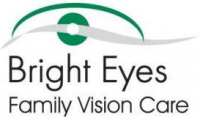“Why is my eye changing color?” is a question we are asked from some patients. While there are conditions that can change the actual color of the eyes, typically the “color change” they are noticing is an accumulation of cholesterol deposits in the cornea. Yes, cholesterol!
The Center for Disease Control (CDC) estimates that 27.9% of Americans have high cholesterol. Most of the time high cholesterol has no symptoms, so many people may not even know they are affected. More importantly, if people are aware of cholesterol, they seldom think about how it affects their eyes. Neither are they aware that a complete, dilated eye exam can detect signs of high cholesterol.
When Dr. Nate and I evaluate the eyes during an exam, we look for signs of high cholesterol in several places:
- EYELIDS
Yellow fatty deposits of cholesterol can show up on the eyelids or on the skin around the eyelids, called xanthelasma (zan-the-laz-muh).
- CORNEA
With the microscope, we look for cholesterol deposits in the cornea, called arcus. Normally the cornea is a clear tissue on the front of the eye, but when cholesterol deposits develop, it causes a white or gray ring to develop along the outer edge. The cornea is a natural place for cholesterol to accumulate over time, so this is a common finding in patients over 60 years old.
- RETINA
A piece of cholesterol, or plaque, may be seen in the arteries of the retina after dilating your eyes. If there is a small plaque in the retinal vessels of the back of the eye, it is likely that there are larger plaques in other places of the body. Large plaques increase your risk for heart attack and stroke. This is one more reason why we encourage patients to have their eyes dilated at their annual eye exams. With both eyes dilated, Dr. Nate and I can look closely at those vessels to rule-out these kinds of concerns.
If Dr. Nate or I find any of these signs, especially if you are under 60 years of age, we may ask you more questions about your lipid levels or even recommend that you get blood tests done with your primary care doctor.
Don’t delay your annual eye exam! Getting your eyes checked should be included in your routine “appointment days.”
-Dr. Beth


Plaque was found in my left eye during an eye exam. I had blood work done & do not have high cholesterol. Went to a cardiologist & had a stress test, everything looks normal. What should I do?
Ms. Wragg,
You should have your eye doctor continue to monitor your eyes and advise you if you need to do anything further.
Best wishes. -Dr. Nate
I had a stroke 6 years ago, but have since lowered my cholesterol with drugs. I do have CAD. Is it possible that the cholesterol shows up from when I had the stroke?
My optometrist has told me twice that retinal imaging shows I likely have high cholesterol and high blood pressure. When I explained that 15 consecutive years of lipid blood tests and examination by a physician show that I have neither condition, she insisted that only a cardiologist could invalidate the findings of this one eye exam… sounds little sketchy to me
My dog has a gray ring around the pupil in one eye only. A dog can have high cholesterol? She is overweight. I had seen on a doctor show that a ring around the pupil is some kind of a worm due to a bacteria that has to be pulled out of the eye. They showed the doctor pulling a worm from the eye. This was in a person. What is your comment? Thank you